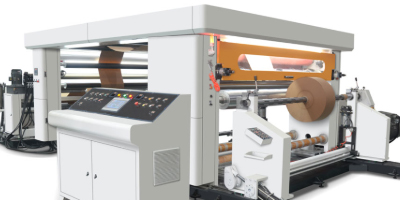Selecting the right slitting rewinding machine is critical for optimizing production efficiency, ensuring product quality, and minimizing operational costs. The choice depends on a combination of factors, including material characteristics, production requirements, precision needs, and long-term reliability. Below is a comprehensive guide to help you make an informed decision.

The first consideration is the type and thickness of the material being processed. Different materials require specific machine configurations:
Material Type:
Films and Foils : Require machines with anti-static systems, precision tension control.
Paper and Cardboard: Need robust cutting systems and dust extraction mechanisms.
Nonwovens and Textiles: Demand gentle tension control to prevent stretching or tearing.
Adhesive Materials: Require temperature-controlled rollers to prevent glue residue buildup.
Material Thickness:
Thin materials need high-precision tension control and micro-adjustable slitting blades.
Thick or rigid materials require heavy-duty rollers and motors with higher torque.
The machine’s capacity should align with your production goals:
High-Volume Production: Opt for high-speed machines with automated features like automatic web threading, core loading, and waste removal.
Low- to Medium-Volume Production: Prioritize flexibility over speed. Semi-automatic machines with manual adjustments may suffice.
Batch Variability: If handling frequent order changes, choose a machine with quick tool-free blade adjustment and programmable settings.
High-precision cutting is the key to reducing material waste and ensuring the quality of finished products.
CNC system: Through digital control technology, accurate planning and execution of cutting paths are achieved to avoid manual operation errors.
High-quality blades: Made of wear-resistant materials and precision craftsmanship, they ensure the sharpness and durability of the blade and reduce material tearing or burrs.
Automatic correction: The system analyzes data in real time and adjusts cutting parameters, dynamically corrects deviations, and ensures stable cutting accuracy throughout the entire process.
A versatile machine future-proofs your investment:
Adjustable Parameters: Blade positioning, winding tension, and speed should be easily adjustable.
Modular Design: Machines with swappable modules adapt to new materials or formats.
Software Compatibility: Programmable logic controllers with user-friendly interfaces allow recipe storage for different products.
Long-term reliability depends on build quality and serviceability:
Construction Materials: Stainless steel or hardened alloy frames resist wear and corrosion.
Lubrication Systems: Automatic lubrication reduces manual maintenance.
Ease of Access: Modular components and tool-free access panels simplify cleaning and part replacement.
Supplier Support: Choose manufacturers offering warranties, spare parts availability, and on-site technical support.
A suitable slitting rewinding machine must align with your material properties, production scale, quality standards, and operational flexibility. By prioritizing precision, adaptability, and durability, you can ensure seamless production and a strong return on your Paper Slitting Rewinding Machine investment.

GET A QUOTE